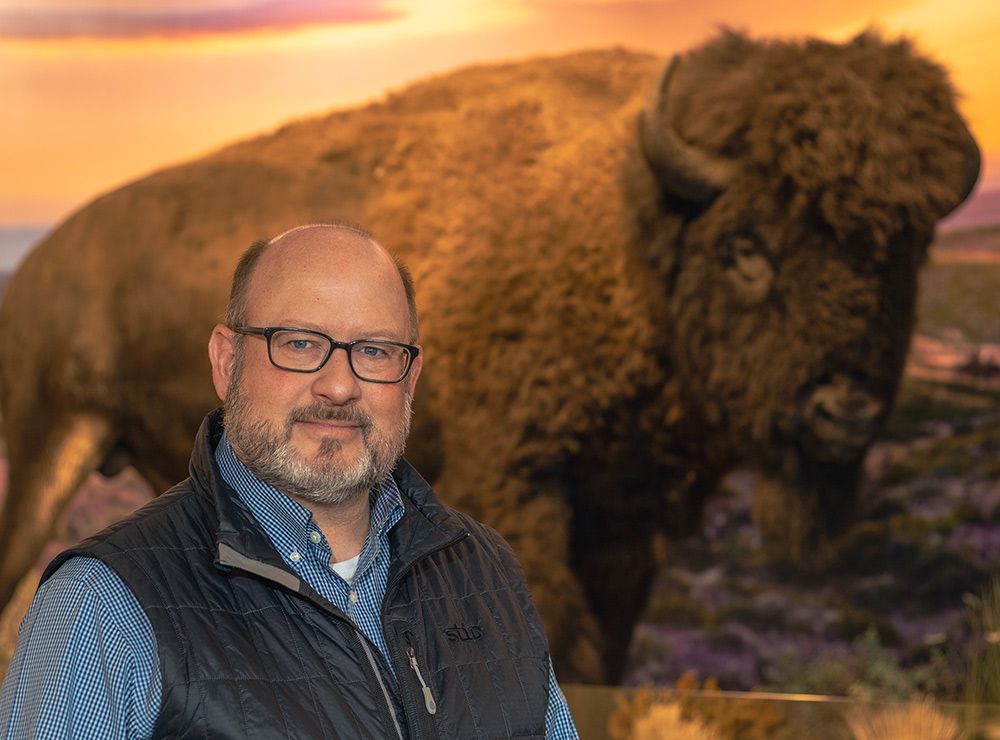
A Bison Protecting Bison

In his role, Cool and his team develop compelling storytelling around American Prairie’s mission in order to build national awareness, engage donors and raise funding to support what he calls “the coolest conservation project you’ve never heard of.” American Prairie’s goal is to connect 3.2 million acres of private and public land to restore a fully functioning prairie ecosystem. By connecting and preserving the vast grasslands in Montana’s Northern Great Plains, the organization strives to restore the biodiversity of the area.
Successful restoration means that species native to the region — including bison — can thrive and fulfill their natural ecological role. Millions of bison once lived on the Great Plains, but they were nearly extinct by the late 1800s. American Prairie first reintroduced these native grazers to the landscape in 2005, after a 150-year absence in that region. Today a herd of more than 900 bison roams across tens of thousands of acres there.
“Bison are considered a keystone species in that they shape the ecosystem to such a degree that their absence would drastically change the environment and negatively impact other species that depend on them and their habits,” Cool says. “Our ultimate goal is to grow bison herds to a population size that would result in the species fulfilling their ecological role on the landscape. Seeing bison roam across the prairie and knowing we are preserving this experience and this landscape for future generations drives me and fulfills me in ways financial services never could.”
Cool says it’s never too late to embark on a new path in life. “I like to give this advice: Take chances,” he says. “Follow things that are interesting. Be intrigued by where you’re going and what you’re doing.”